Abstract
Chronic subcutaneous turpentine administration (weekly for 6 weeks) induced a mild normocytic anaemia in mice. In-vitro and in-vivo intestinal Fe3+ absorption parameters were, however, not significantly altered from values in saline-treated or untreated mice. Normal mice, when exposed to 3 days hypoxia demonstrated a 2-3-fold increase in iron absorption in vivo, mainly due to changes in the amount of iron transferred from the mucosa to the plasma and thence to the carcass. A 2-3-fold increase in Vmax was also observed in in-vitro uptake experiments using isolated duodenal fragments. In contrast, turpentine-treated animals, though demonstrating an enhanced in-vitro maximal uptake capacity, failed to elicit an adaptive response in vivo following hypoxic exposure. These findings suggest that a circulating (humoral) factor may be responsible for the inhibition in absorption in vivo in this turpentine-induced inflammatory model.
Full text
PDF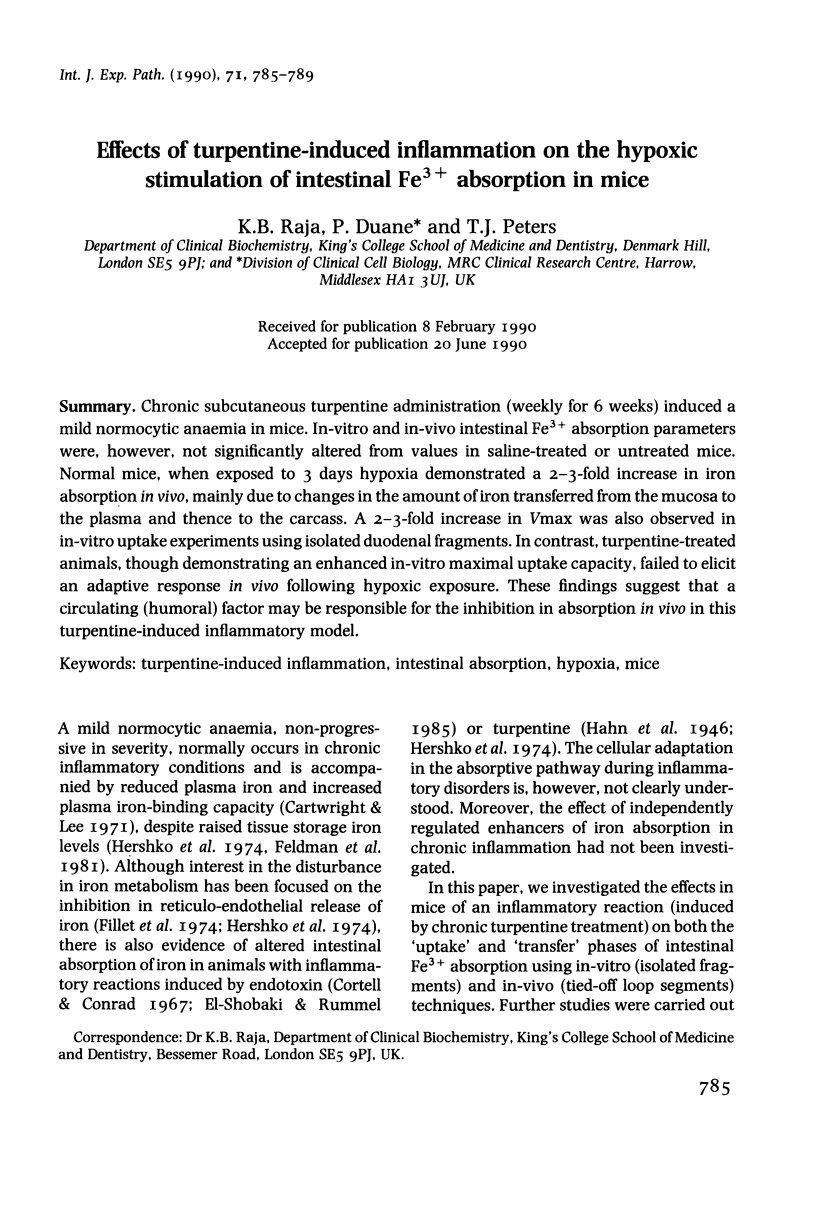
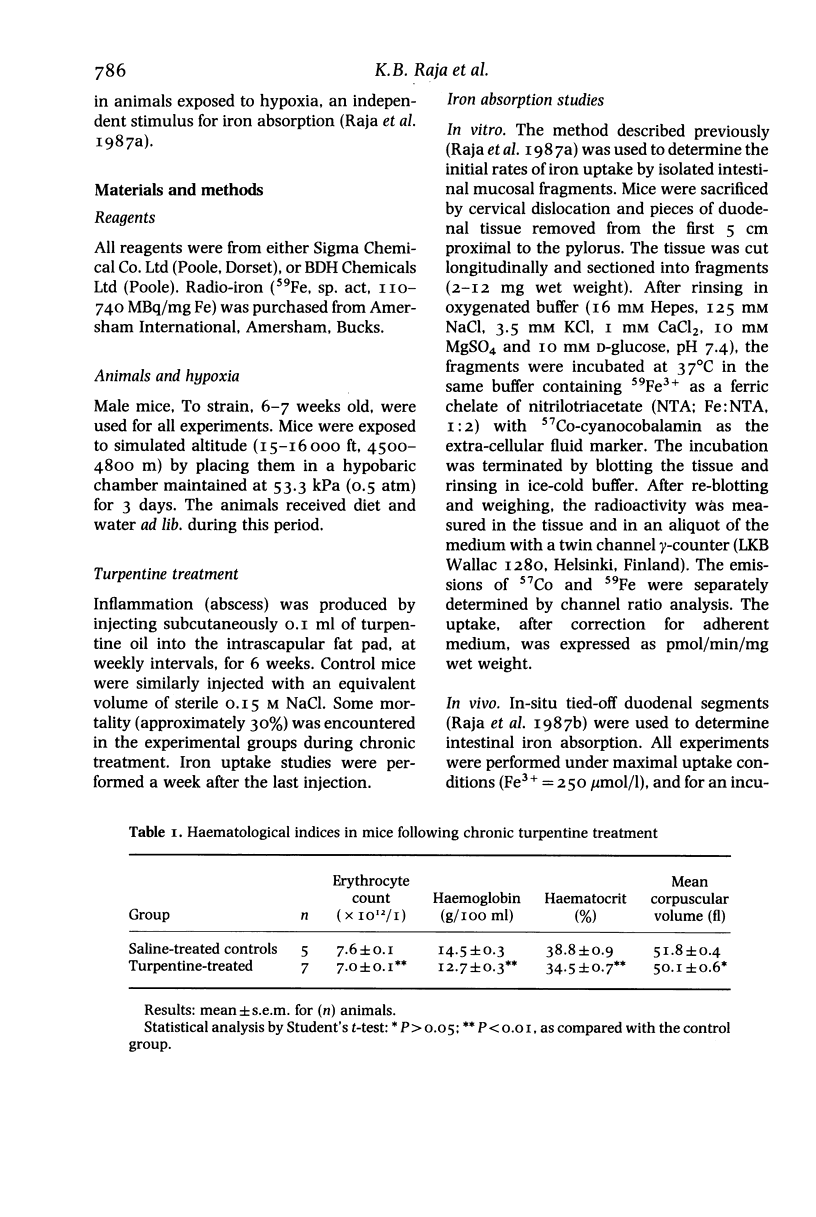
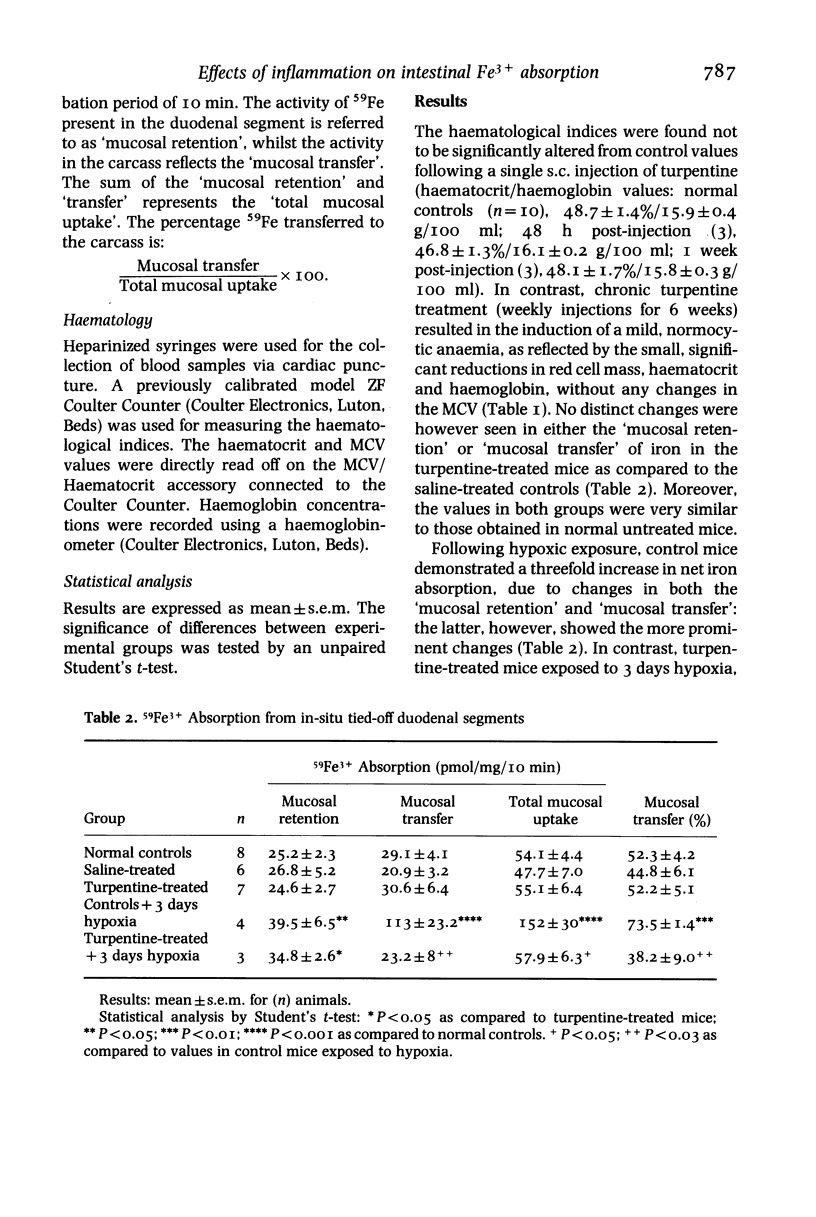
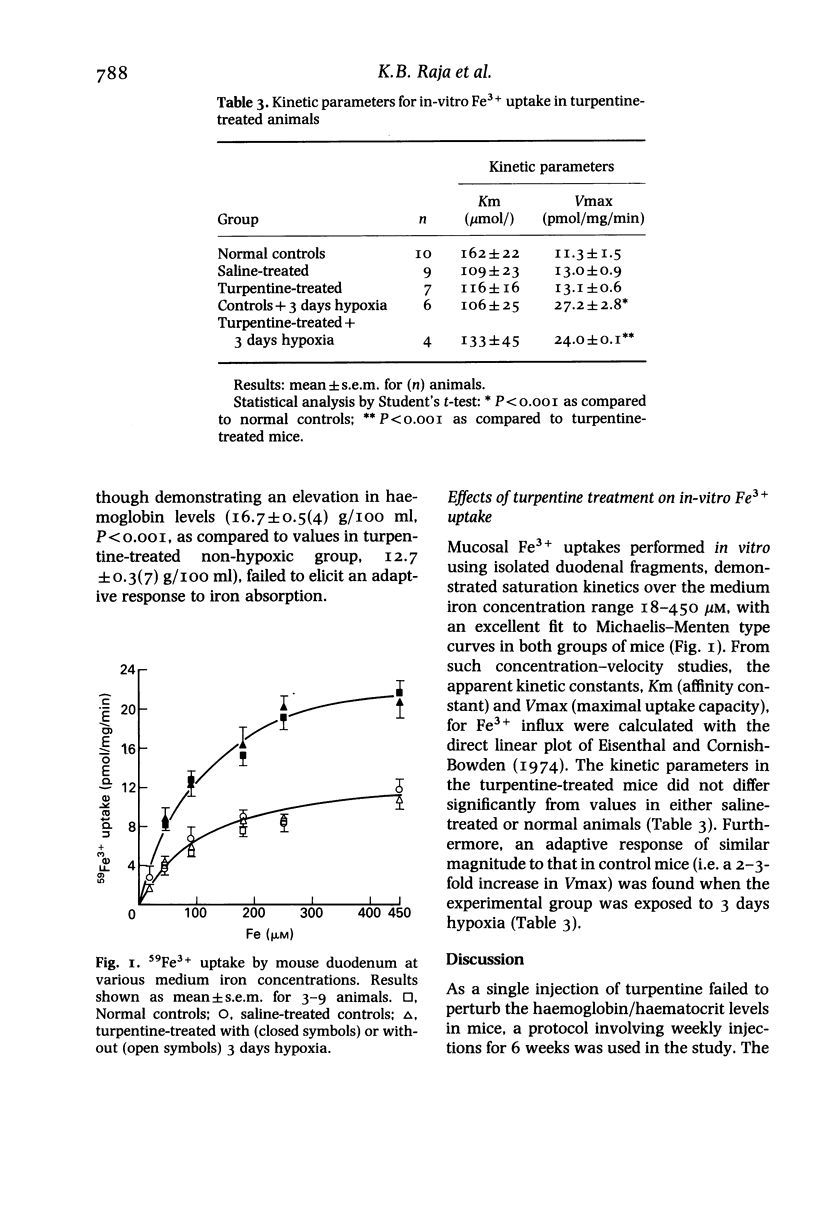
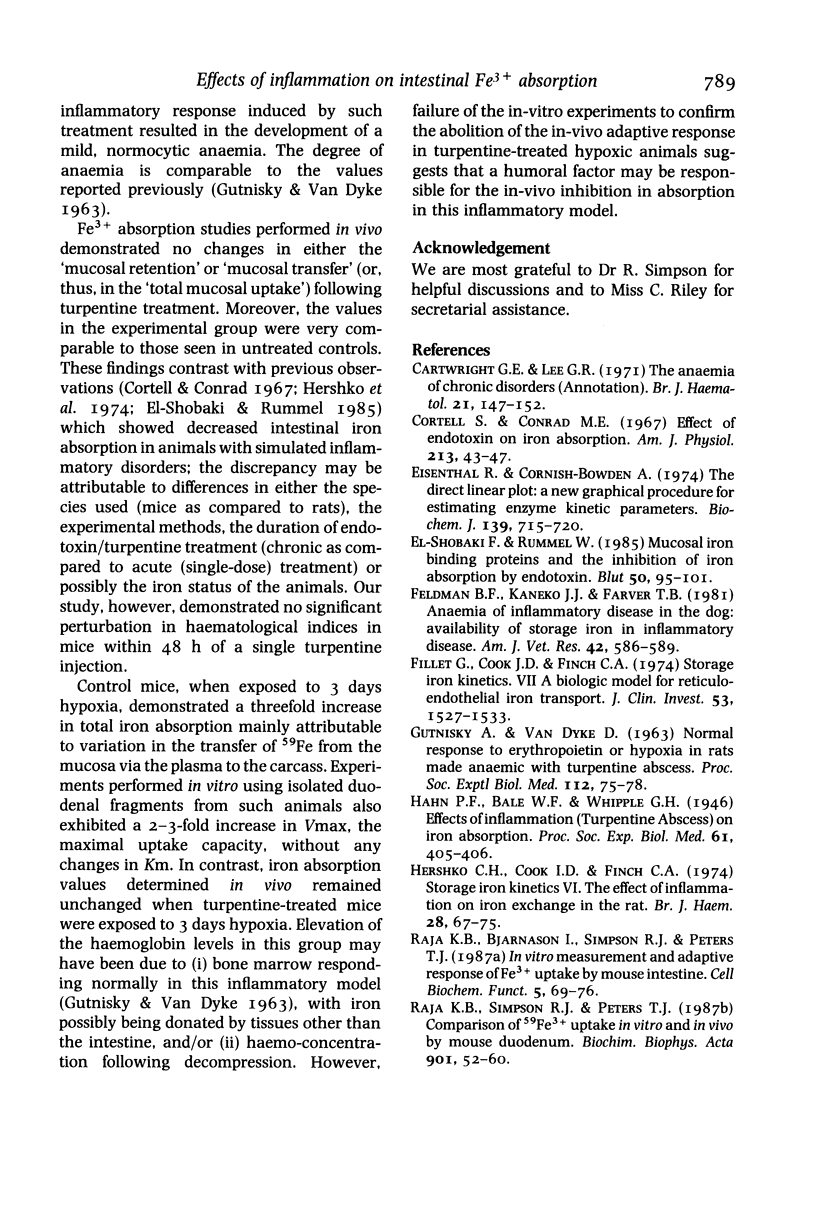
Selected References
These references are in PubMed. This may not be the complete list of references from this article.
- Cortell S., Conrad M. E. Effect of endotoxin on iron absorption. Am J Physiol. 1967 Jul;213(1):43–47. doi: 10.1152/ajplegacy.1967.213.1.43. [DOI] [PubMed] [Google Scholar]
- Eisenthal R., Cornish-Bowden A. The direct linear plot. A new graphical procedure for estimating enzyme kinetic parameters. Biochem J. 1974 Jun;139(3):715–720. doi: 10.1042/bj1390715. [DOI] [PMC free article] [PubMed] [Google Scholar]
- Feldman B. F., Kaneko J. J., Farver T. B. Anemia of inflammatory disease in the dog: availability of storage iron in inflammatory disease. Am J Vet Res. 1981 Apr;42(4):586–589. [PubMed] [Google Scholar]
- Fillet G., Cook J. D., Finch C. A. Storage iron kinetics. VII. A biologic model for reticuloendothelial iron transport. J Clin Invest. 1974 Jun;53(6):1527–1533. doi: 10.1172/JCI107703. [DOI] [PMC free article] [PubMed] [Google Scholar]
- GUTNISKY A., VAN DYKE D. Normal response to erythropoietin or hypoxia in rats made anemic with turpentine abscess. Proc Soc Exp Biol Med. 1963 Jan;112:75–78. doi: 10.3181/00379727-112-27954. [DOI] [PubMed] [Google Scholar]
- Hershko C., Cook J. D., Finch C. A. Storage iron kinetics. VI. The effect of inflammation on iron exchange in the rat. Br J Haematol. 1974 Sep;28(1):67–75. doi: 10.1111/j.1365-2141.1974.tb06640.x. [DOI] [PubMed] [Google Scholar]
- Raja K. B., Simpson R. J., Peters T. J. Comparison of 59Fe3+ uptake in vitro and in vivo by mouse duodenum. Biochim Biophys Acta. 1987 Jul 10;901(1):52–60. doi: 10.1016/0005-2736(87)90255-0. [DOI] [PubMed] [Google Scholar]


